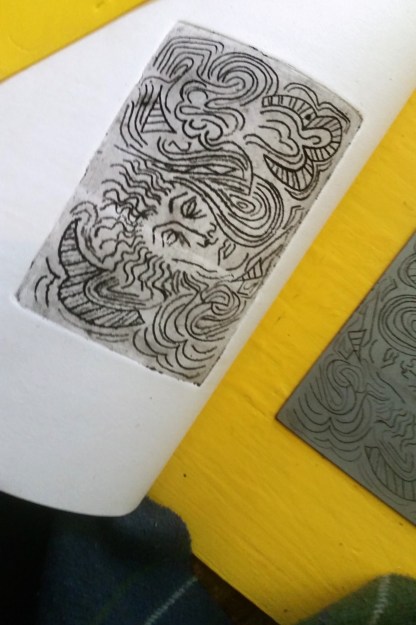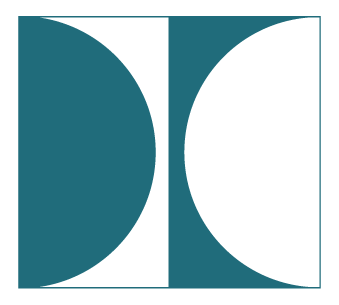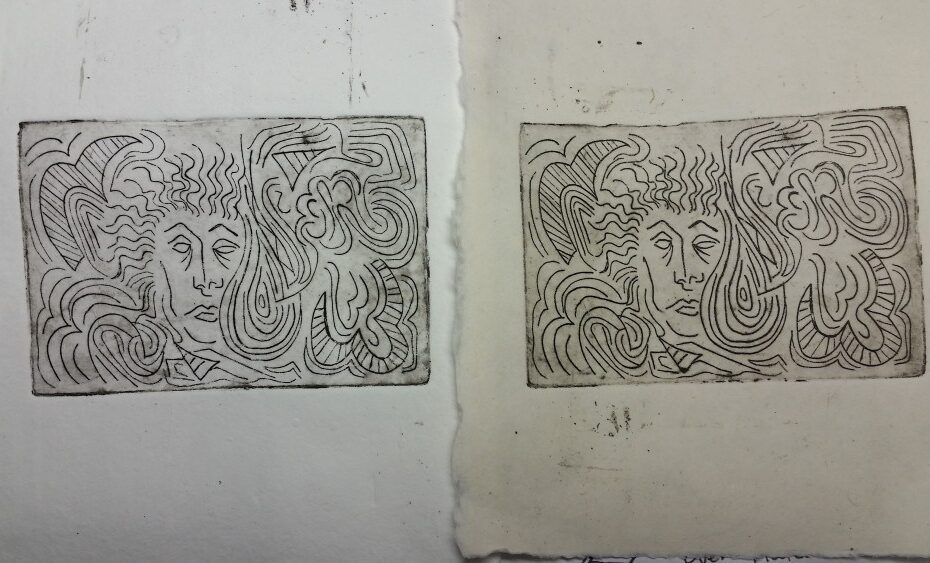I have been using my pocket printing press to press drypoint etchings for years. Like many artists out of art school, I have no easy access to etching using acid. I didn’t know if my hand held press could create enough force to press the ink from the deeply etched lines of an acid etched plate. So I reached out on the Printmakers Unite! Facebook group and a very kind and experienced printmaker responded. Erika Chamberlin is a fine artist, seasoned printmaker, and a retired USFS firefighter. This might explain why she was up for this art adventure. Even though we’ve never met and have no friends in common, she sent me a stack of intaglio and relief plates, including two fantastic zinc etching plates she made decades ago, so that I could press them with my pocket press and platen… in my pajamas.
The first print turned out pretty well!


There are a couple of spots where the ink didn’t rise completely from the etched lines. Pressing harder seems like the solution, but pressing too hard can also cause the ink to bleed a little. I got to thinking that a softer cloth behind the paper might help it reach the ink. Rebecca from Boxcar Press shared with me that letterpressers use tympan or onion skin paper behind their printing paper to get more of an impression using traditional presses. So I did a test run where I laid craft foam across the back of one half of the plate, and fleece over the other half. You can see the light line that appears where the two materials met. Both backings caused too much bleeding, but definitely got all the ink out of the lines.
I tried a thinner fabric and the line still remained blurred. Then I tried tracing paper in place of onion skin paper, but it did not have any effect. If the lines are very deeply etched, as they are on the leftmost portion of this zinc etching plate (see right most portion of paper) it may be challenging to transfer palm press, or any printmaking press for that matter. Or, it may just be a matter of needing a spongier paper, or a higher quality ink. The beauty of printmaking is that it combines art with science, which is probably why printmaking is traditionally done in a lab. I’ve ordered some high quality handmade paper from Kelsey Pike Papercraft to try out.
UPDATE
Kelsey’s handmade paper arrived on time and it turns out my mini printmaking press can handle deeply etched plates- I just needed to use high quality paper like I was required to do back in art school. Only a high quality paper can reach into these grooves. This paper can also handle soaking longer.
First, I tried Kelsey’s white cotton paper, which I soaked for about 10 minutes and got a really great print. Kelsey sent a long a sample of her All Paper, which has better wet strength. I soaked it for 20 minutes, patted it dry, and got an even better print.
I’ll be sending these prints back to Erika to sign. She’s going to send me one back to keep. Maybe some of the others will appear on her artist website.
Materials use for these prints:
- Paper- thin vellum (cardstock) as well as bristol vellum, soaked for a minute or 2, follower by Cotton and All papers by Kelsey Pike Sustainable Papercraft.
- Ink- Speedball Block Printing Ink


Thank you for sharing the alternative for etchings. I was just working on my first in toooo long,using a tool from a compass set and trying to think of what to use to make a print and you pop up.
Thank you
Santos